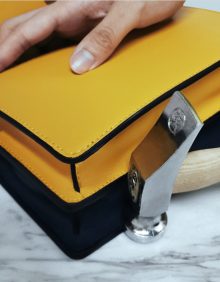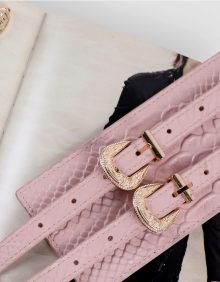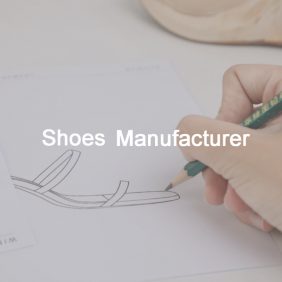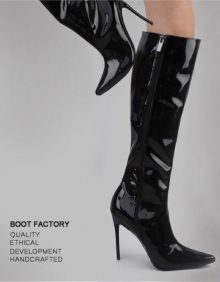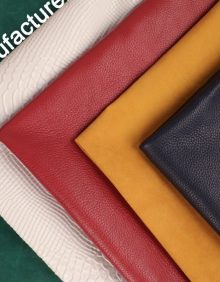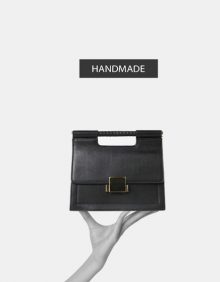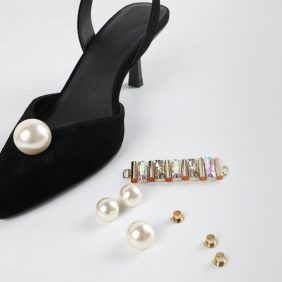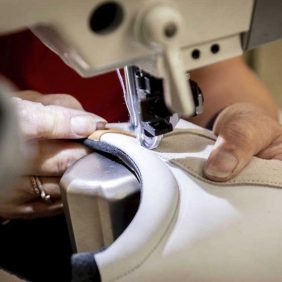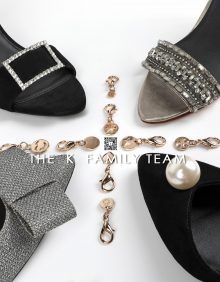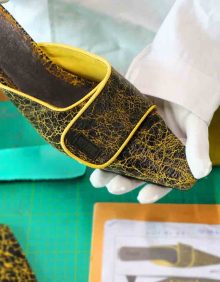Bespoke
Bespoke Guide
Bespoke Footwear Guide Of The K Family Team
Bespoke
Bespoke Guide
Bespoke Shoes Guide
Bespoke footwear, known commonly as custom footwear, was formerly the norm. Shoes, boots, pumps, flats, sandals, and even slippers for men and women alike was cobbled by hand to fit each person’s foot. This array of footwear often lasted a person’s entire life and allowed them to keep a predictable style, changing and upgrading soles and other accessories as needed. To this day, bespoke footwear isn’t designed to wear out the same way a pair of penny loafers from the nearest shoe shack will. They are intended to be buried with you, which makes it all the more important that you know all about bespoke footwear if you have any desire to outfit yourself with a set of custom shoes. Therefore, only the most expert stylists, fine materials and skilled craftsmen are able to bring together such a feat. The artisans who craft these shoes and boots are experts in not only crafting a stylish shoe, but making one that is ideal for you as a human being.
The K Family Factory provides Bespoke service, you can enjoy it on our online boutique.Firstly, select your desired shoe types like heel, flat, wedge, boot, etc., secondly select upper and sole, thirdly decide your favorite material and color, fourthly design your icon, lastly confirm your option. For new development, we will make initial prototype firstly, after you approved all the details of new prototype, our normal process is to make one piece sample as initial prototype per style only. After prototype approved, we will proceed with correct color and full pair shoes.
Here is a guide of the footwear bespoke process, which summarizes the process of making entirely bespoke shoes, from creating a last, to pattern making, to assembling the shoe. This guide isn’t designed to show you how to make a specific type of shoe, but rather serves as a general guide for the footwear making process.
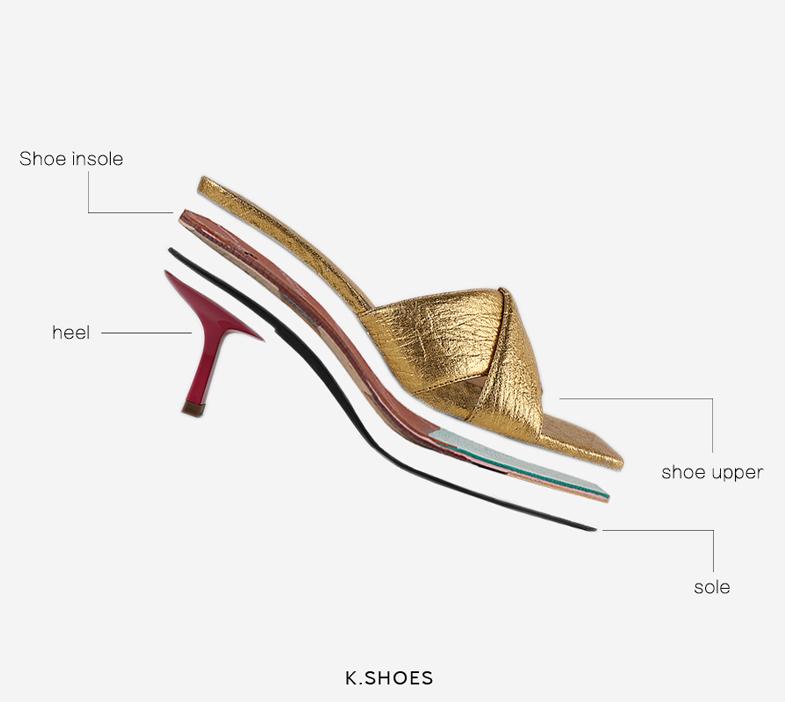

Understanding Shoe Construction
Shoe construction is an intricate process, further complicated by various construction methods and industrial equipment not available to custom shoe makers. Deconstructing shoes is a great means of learning about all the different components used, and their purposes. By breaking up a shoe into its individual parts you can learn how the shoe was assembled and what components may be simplified to eliminate steps from the construction process.
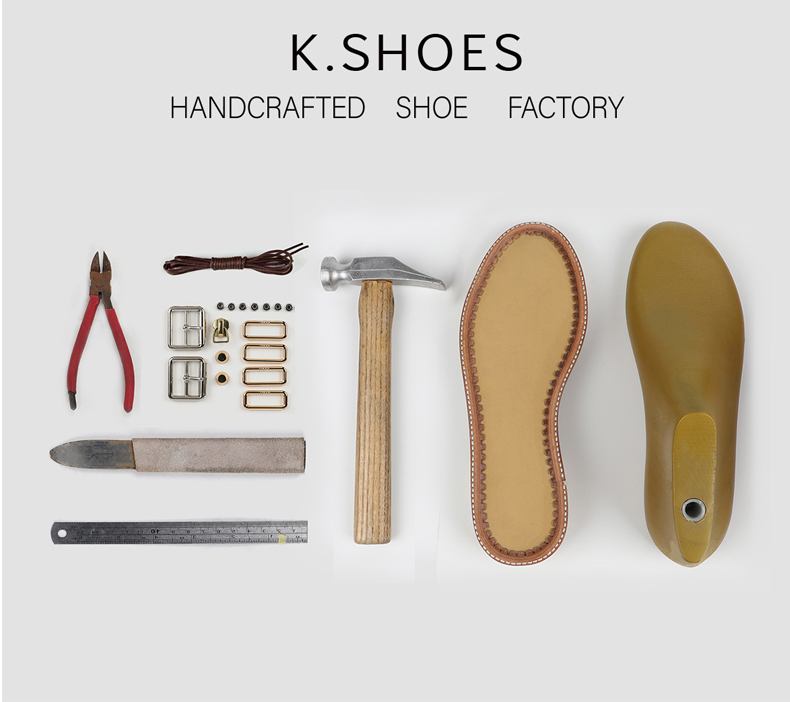

Tools and Materials
Before starting, we should prepare all the tools and materials used in the process, which is convenient for making shoes smoothly. We would prepare the following things in advance: sewing machine or sewing awl, tracing wheel, fabric scissors, flat nose lasting pincer, skiving knife, hole puncher, 80-grit sand paper and the needed materials for making the shoes.


Measurement of Foot Size
To measure your feet, stand on a level floor with the back of your heels against a straight edge or wall. Measure your foot length by placing a ruler flat on the floor, straight alongside the inside of your foot, from your heel to your toes. Place an object with a flat edge straight across your toes with the edge touching the tip of your longest toe. Take the measurement (in millimeters) from the ruler where the flat edge crosses. This is your foot length measurement.
If your foot measurement is halfway between sizes, select the larger size. You may find that one foot is longer than the other. This is quite normal.
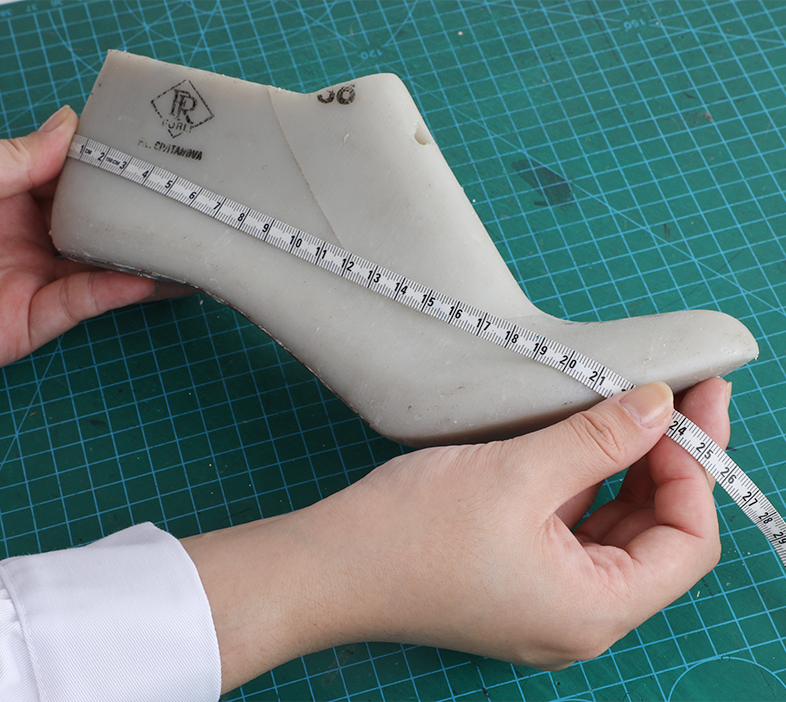

Creating a Shoe Last
A last is a mechanical form that approximates the shape of the human foot. The last provides the shoemaker the basis for building the shoe around. Thus, the first step to making bespoke footwear is to obtain an appropriate last. Lasts are specific to the type of shoe being created. As an example, a boot last is typically taller and built to create a closer fit than a sneaker last. It’s important to determine the style of shoe before purchasing or creating a last. While classical lasts are made of wood, modern lasts are typically made of a high density recyclable plastic.
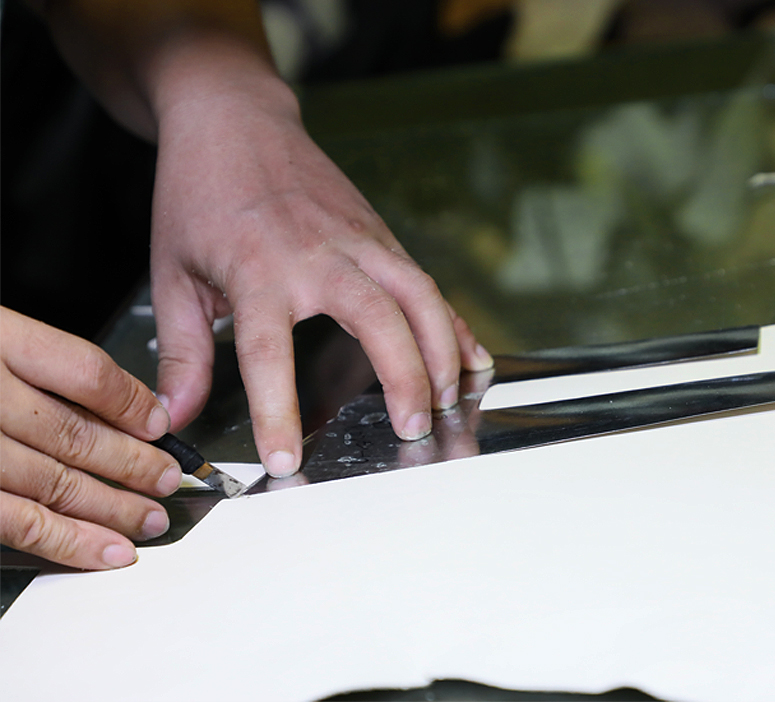

Shoe Pattern Making
To transform the 2D drawing into a three dimensional form it will need to translate the sketches into 2D patterns which will collectively form the shoe upper. Using masking tape and beginning taping the last. Start from the heel and use the tape to cover the last from heel to toe. Lay the tape as smooth and flat as possible, overlapping half the width of the tape as it is moved downward. Use a ruler or a flat instrument to smooth the tape over the curved surface of the last. Mark a straight line along the length of the last and use that to define the center of the last. After that, start to transfer the 2D side view to the taped last by sketching directly on the newly wrapped last. As long as the shoe is symmetrical lengthwise, it only need to create the pattern on one half of the last. Use an X-ACTO knife or a box cutter to separate each part of the design and then peel the tape off the last. Tape each part of the design onto a piece of stiff pattern paper or a manila folder. Remember to leave 1/4 to 1/2 of an inch offset from each pattern part for sewing allowance. Leave approximately a 1 inch offset for all edges that will connect to the bottom of the last.
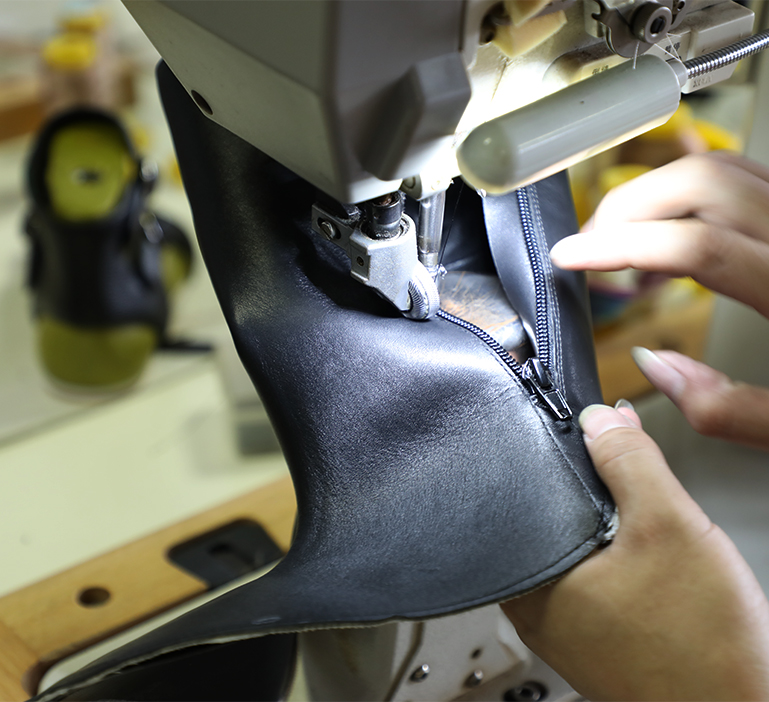

Sewing and Lasting
Use a silver pen or fabric pencil to transfer the paper pattern to the upper and lining fabric. If the design has a stretchable lining, than cut each piece slightly smaller than the appearance fabric. Follow the shape previously drawn for sewing and be patient. Before sewing each part together, use rubber cement to glue two edges together of the part. Let them dry and sew them together on the sewing machine. Go slowly and make sure each stitch goes through both pieces. The sewing process can be accomplished by hand but doing so requires a sewing awl and takes significantly longer. After sewing all the parts together, place the lining and leather upper on the last. Use the footprint pattern to cut out an insole board from the cellulose board. Use nails to secure the insole board to the bottom of the last. The shoe lasting process takes time to ensure the fabric is smooth with no overlapping. Nail the lining and place permanent glue to adhere the lining to insole board. Hammer it down, then repeat the same process with the leather upper.
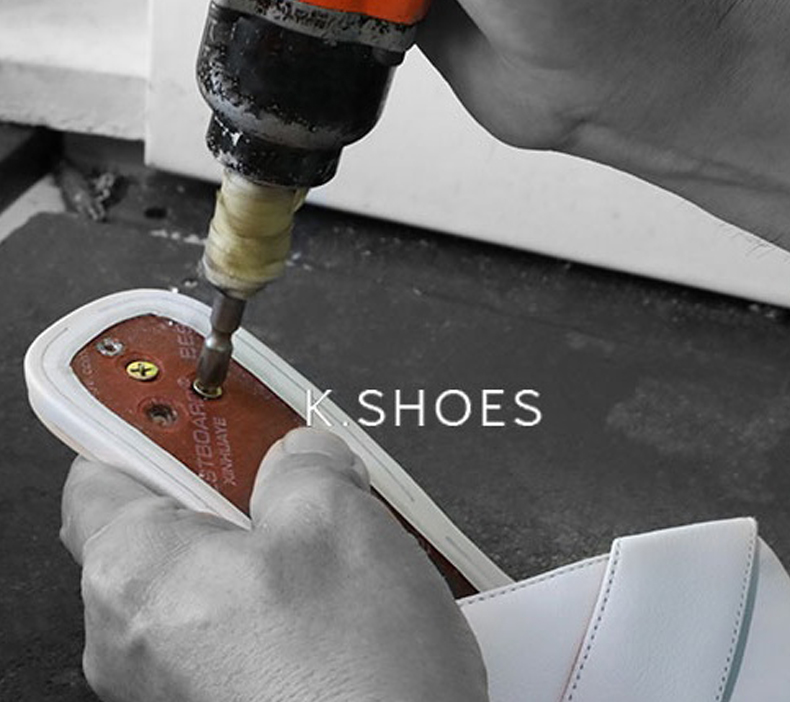

Lasting Continued
Sand the excess material on the bottom of the last and fill the gap using cork sheet until the bottom is flat and smooth. Make sure the glue is dry and then push both pieces together. If necessary, you can put weight on the last to ensure adhesion. Following the lasting process remove the last from the shoe. If the last has a hole through the top, this is best accomplished by using a metal rod as a lever to pull the last from the shoe. Use the leather hole punching tool to punch eyelet holes and stitch on any external components as necessary.
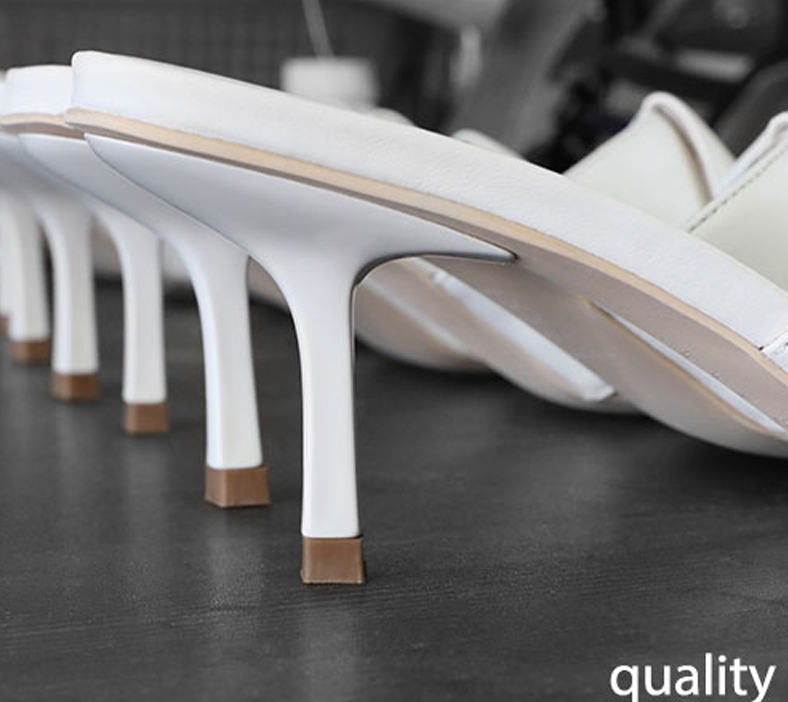

Joining the Upper and Sole
Using liquid cement or an equivalent adhesive, apply the adhesive on the open faces of the upper and sole near the heel. Apply the adhesive to 1/4 the length of the shoe at a time, allowing the adhesive to partially dry it is moved forward. Prior to allowing the adhesive to fully dry, check along the edges of the upper to see if we missed any spots throughout the process; apply more adhesive as necessary.
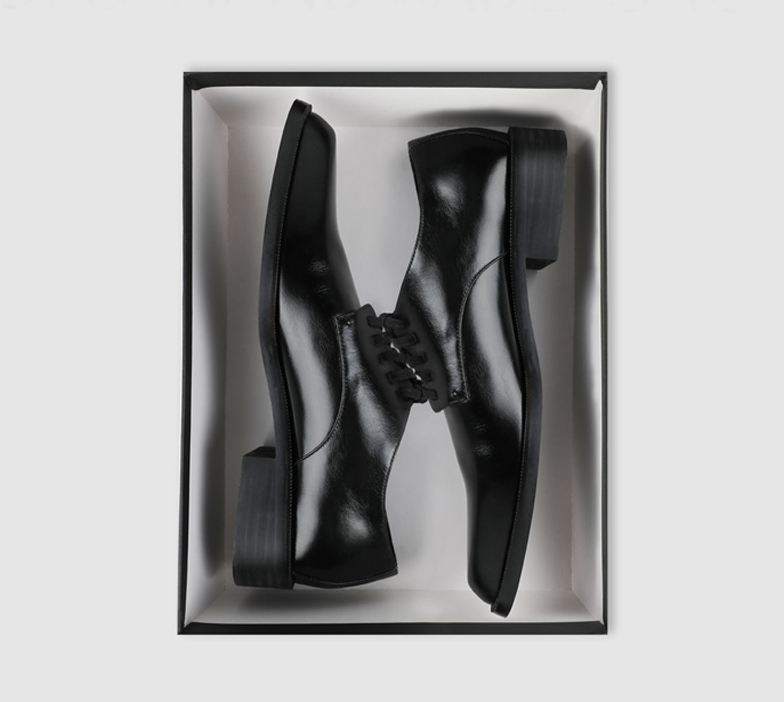

Packing
Each bespoke shoe then undergoes a thorough final quality check. THE K HANDMADE FAMILY FACTORY has a variety of unconventional shoe boxes and dust bags that can make an amazing package something even more remarkable. Custom dust bags and shoe boxes is the part of our making, you can do own design with logo artwork. Many options in color, finishing, texture, shapes, sizes and magnetic lids are available.
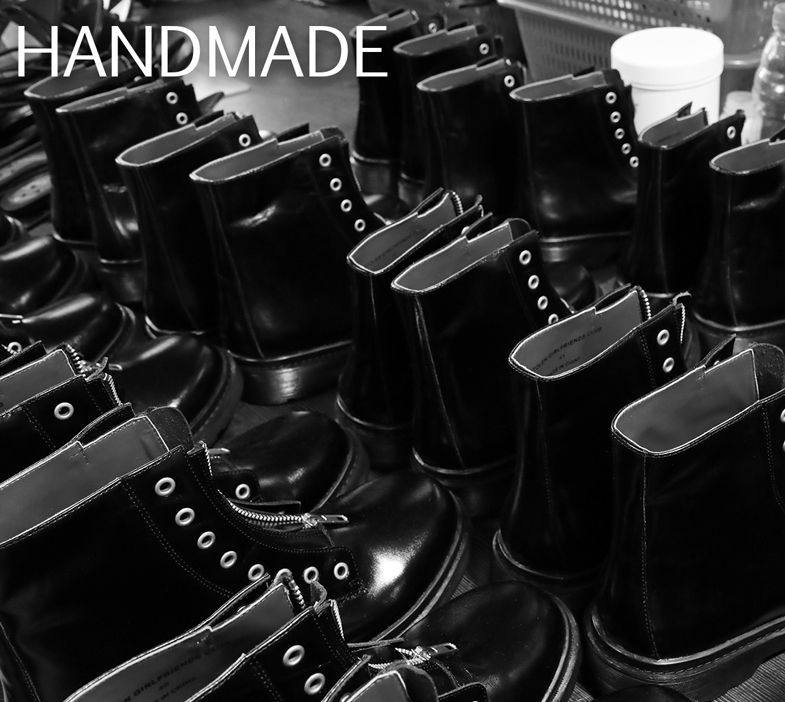

Bespoke Delivery & Time
Please allow the bespoke item a delivery time of 8-10 weeks and free for international shipping. There will be a little color/material variations between the pictures and the finished products. As for customize shoes,the made to order item is not allow to return & exchanges
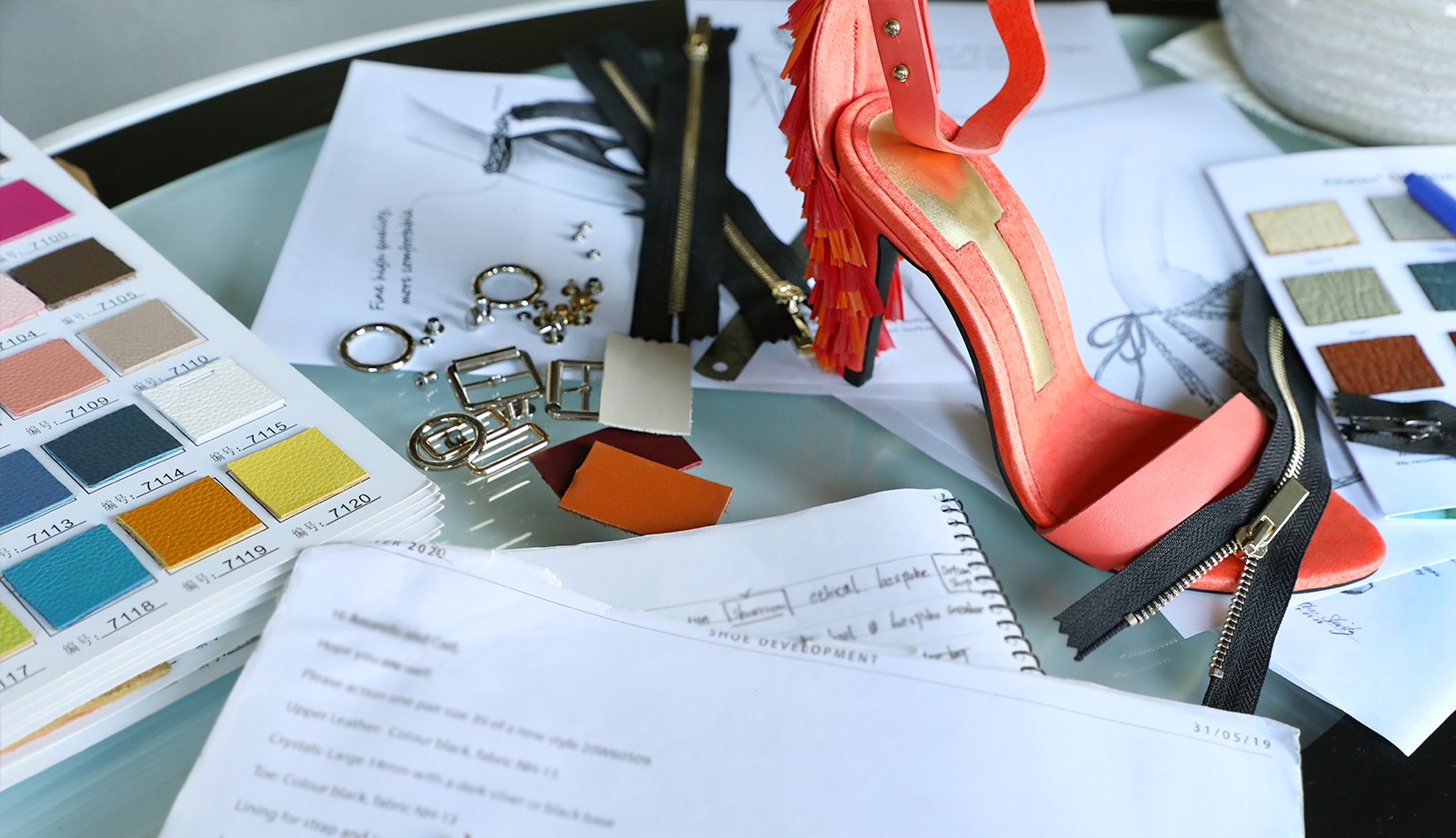

The same could be said of the bespoke, or custom, shoemakers who still make footwear by hand with leather, a hammer, and nails. Although custom footwear is slowly becoming a lost art, a handful of shoemakers are steadfastly keeping the age-old craft alive. Once you step out in a pair of bespoke shoes, customized to your foot’s individual characteristics, it’s hard to wear anything else. Within The K Family Factory, our master shoemakers have supremely skilled and dedicated craftsmanship, leading our bespoke team in creating handmade perfection. Every element is made by hand, and the leathers for bespoke projects are specially selected and no stone is left unturned to ensure they are of the highest quality.
Please allow the bespoke:
- Item a delivery time of 8-10 weeks and free for international shipping.
- There will be a little color/material variations between the pictures and the finished products.
- As for customize shoes,the made to order item is not allow to return & exchanges


